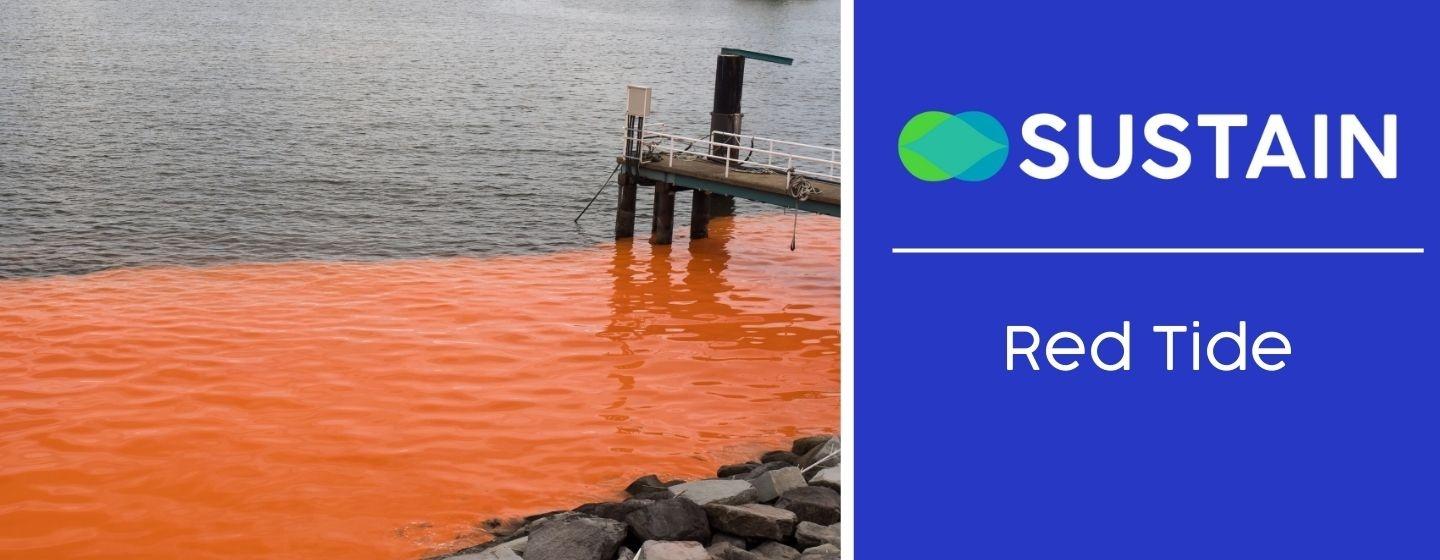Red Tide



Red tide is a phenomenon that frequently appears on the shores of West Central Florida. While it might sound like a scenic natural event, red tide poses significant challenges to marine life, human health, and Florida’s economy. Let’s dive into what causes red tide, why it's dangerous, its economic impact, why it's becoming more frequent, and what we can do to mitigate its effects.
What Causes Red Tide?
Red tide is caused by the rapid growth of a type of algae known as Karenia brevis. This microscopic organism is a natural part of the marine environment, but under certain conditions, it can multiply explosively, leading to what we know as a red tide. The algae produce toxins that can have serious consequences marine life, humans, and the environment. Factors such as warm water temperatures, high nutrient levels (often from agricultural runoff), and favorable currents contribute to these algal blooms.
Why Is It Dangerous to Animals and People?
The toxins produced by Karenia brevis can be harmful to both marine life and humans. For marine animals, these toxins can cause illness and death, impacting fish, sea turtles, dolphins, and manatees. The sight – and smell -- of dead fish washed up is a familiar experience to many Floridians, signaling a red tide has arrived.
For humans, red tide can cause respiratory issues, particularly for those with asthma or other respiratory conditions. The toxins become airborne when waves break, leading to coughing, sneezing, and eye irritation for beachgoers. Additionally, consuming shellfish contaminated with red tide toxins can lead to neurotoxic shellfish poisoning, a serious health risk.
What Is the Economic Impact to Florida?
The economic impact of red tide on Florida is significant. The state’s economy heavily relies on tourism, fishing, and recreational activities, all of which are adversely affected by red tide. Beaches covered with dead fish and the accompanying unpleasant odor deter tourists, leading to a decline in revenue for local businesses. Fishing industries also suffer, with decreased fish populations and shellfish harvests, impacting livelihoods and the local economy. The financial burden extends to healthcare costs due to red tide-related illnesses and cleanup efforts required to maintain the beaches.
Why Is Red Tide Becoming More Frequent and Large?
Several factors contribute to the increasing frequency and size of red tide events. Climate change plays a crucial role, with warmer ocean temperatures creating a more favorable environment for algal blooms. Additionally, nutrient pollution from agricultural runoff, wastewater discharge, and urban development provides the necessary food for algae to thrive. As human activities continue to increase nutrient levels in coastal waters, red tides become more frequent and intense.
What Can We Do to Mitigate Red Tide Outbreaks?
While we cannot completely prevent red tide, there are steps we can take to mitigate its impact and frequency:
Conclusion
Red tide on the Gulf of Mexico in Florida is a complex and challenging phenomenon with significant ecological, health, and economic impacts. By understanding its causes and effects and taking proactive measures to reduce pollution and protect our coastal environments, we can work towards mitigating the frequency and severity of red tide events. Together, we can ensure the Gulf of Mexico remains a vibrant and thriving ecosystem for future Floridians.
Did you learn something new? Please take a moment to answer this short survey.